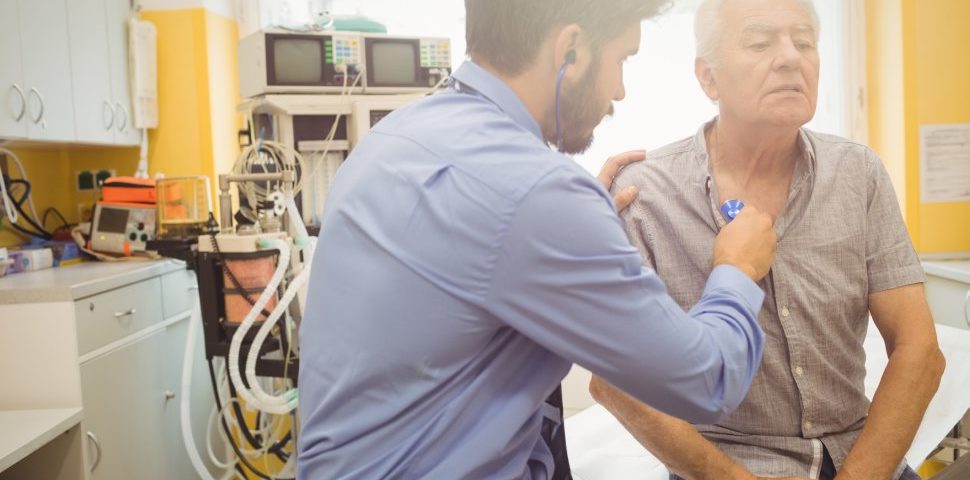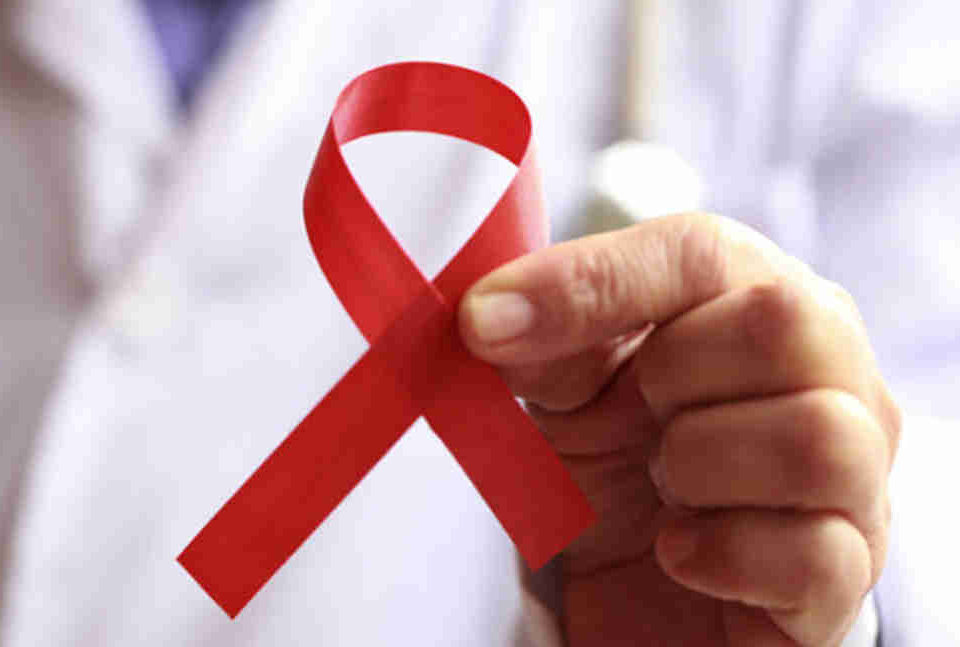According to the American Cancer Society, 228,150 new cases of lung cancer (116,440 in men and 111,710 in women), are expected to be diagnosed in 2019, making it the second most common cancer in both men and women (not counting skin cancer). And it’s a deadly cancer – about 142,670 people are expected to die of the disease (76,650 men and 66,020 women) in 2019. “If you add up all the deaths from the next several most common causes of cancer deaths, it does not equal lung cancer,” says Dr. David Carbone, medical oncologist and director of the Thoracic Oncology Center at The Ohio State University Comprehensive Cancer Center – Arthur G. James Cancer Hospital and Richard J. Solove Research Institute.
- 如有疑问,请联系电邮
- customer@ihealth66.com
USNEWS:2020肺癌患者指南

USNEWS:结肠癌的早期征兆
2019年3月21日
最新临床试验:是否接受合并化疗的放射治疗对既往接受过手术的I-IIA期宫颈癌患者影响
2019年3月24日By Elaine K. Howley
根据美国癌症协会(American Cancer Society)的数据,预计2019年将有228,150例肺癌新病例(男性116,440例,女性111,710例)被诊断出来,使其成为男性和女性第二大常见癌症(不包括皮肤癌)。这是一种致命的癌症——2019年预计将有142670人死于这种疾病(76650名男性和66020名女性)。“如果死亡原因排名在肺癌之后的几个最常见的癌症都加起来,也达不到肺癌的死亡水平,”大卫·卡伯恩博士这样解释肺癌的危害性,他是俄亥俄州立大学综合癌症中心——阿瑟·g·詹姆斯肿瘤医院和理查德•j•Solove研究所的医疗肿瘤学家和胸肿瘤中心主任。
肺癌的症状和体征
肺癌通常不会在早期表现出很多症状,这使得在其最可治疗的阶段发现它是一项艰巨的任务。根据美国癌症协会的数据,在那些确实有症状的人中,最常见的症状是:
- 咳嗽持续不退,甚至更严重。
- 咳血或铁锈色的痰(痰或痰)。
- 胸痛,常因深呼吸、咳嗽或大笑而加重。
- 声音沙哑。
- 减肥和食欲下降。
- 呼吸短促。
- 感到疲倦或虚弱。
- 支气管炎和肺炎等传染病既不会消失也不会复发。
- 重新开始喘息。
肺癌不会因性别或种族而受到歧视,但吸烟史是导致肺癌的主要风险因素。卡蓬说,85%的肺癌患者在他们生命的某个阶段吸烟,国家癌症研究所报告说,吸烟者比不吸烟者患肺癌的风险高20倍。
但值得注意的是,并不是所有的吸烟者都会患肺癌,也不是所有的肺癌患者都是吸烟者。环境暴露于可吸入的致癌物(致癌物质)和有毒物质(如空气污染)中,可能是15%左右肺癌的罪魁祸首。在从不吸烟的人群中,氡和辐射是引起肺癌的两种常见因素。
基因也会影响你是否会患上肺癌。一种名为EGFR的基因突变已被确定为肺癌的遗传来源。根据纽约纪念斯隆凯特琳癌症中心的数据,EGFR基因突变在非小细胞肺癌患者中占10%,在从未吸烟的肺癌患者中占近50%。
除了表皮生长因子受体(EGFR),研究人员正在着手解开的其他导致肺癌的基因突变还包括ALK、ROS1和BRAF。这一新的信息正在指导先进疗法的发展,这些疗法显著延长了一些患者的预期寿命。克利夫兰诊所(Cleveland Clinic) Taussig癌症研究所(Taussig cancer Institute)肺癌医学肿瘤学项目主任内森?“我们正在把(肺癌)分解成越来越小的疾病,而这些疾病都是从肺部开始的。”
筛选
虽然目前或以前大量吸烟的人被鼓励监测他们肺部的健康状况,特别是如果他们不愿或不能戒烟的话,但定期进行肺癌筛查还不常见。美国预防服务特别工作组建议,对55至80岁的成年人每年进行一次低剂量CT扫描,这些人每年有30包吸烟史,目前正在吸烟,或在过去15年内戒烟。你的烟盒年数字是通过将你每天吸烟或吸烟的包数乘以你吸烟的年数计算出来的。例如,如果你连续30年每天抽一包烟,那么你的年吸烟率将是30。这个数字越高,患肺癌的风险就越高。
位于马萨诸塞州伯灵顿的拉希医院(Lahey Hospital)和医疗中心(Medical Center)的索菲娅戈登癌症中心(Sophia Gordon Cancer Center)放射肿瘤学主任安德里亚b麦基(Andrea B. McKee)博士说,这种筛查应该更广泛地用于帮助在肺癌最容易治疗的早期阶段发现它。筛查提供了“我们所见过的对肺癌的任何干预措施中最大的死亡率益处。”
然而,筛查确实带来了假阳性的可能性,这可能导致不必要的手术和对患者的潜在伤害。尽管存在这些风险,改善死亡率肺癌筛查提供意味着“你绝对应该有一个跟你的初级保健医生或医生筛查和是否对你有意义,“如果你属于任何的参数筛选准则,麦基说。与你的医生进行这样的对话并做出“共同的决定”是至关重要的。
诊断
要诊断肺癌,医生会使用x光或CT成像来更好地检查你的肺部。如果发现可疑的肿块或肿瘤,医生可能会建议进行额外的影像学检查,如PET(或正电子发射断层扫描)扫描或肺内窥镜检查,医生将使用内窥镜检查你的气道。活组织检查将移除组织样本,然后进行检测,以确定肿块是否癌变,如果癌变,以及癌症的类型和分期。
你的肿瘤样本将被送往实验室进行进一步分析,以确定可能推动癌症生长的特定基因突变。这一信息对于帮助你的肿瘤医生为你的个案制定正确的治疗计划是很重要的。
虽然CT成像和手术活检被认为是目前诊断肺癌最准确的方法,但研究人员正在开发一种侵入性较低的技术,称为液体活检,有一天可能取代高风险手术并需要x射线辐射来确定是否存在癌症。液体活检检查病人的血液样本,以寻找癌细胞DNA的证据。希望随着这些分析的准确性提高,液体活检最终能够取代CT成像作为常规筛查方法;因为它的副作用很少,而且可能更便宜地提供给更广泛的人群。
Signs and Symptoms of Lung Cancer
Lung cancer typically does not offer many signs of its presence early on, which makes detecting it in its most treatable stages a difficult undertaking. Among those who do have symptoms, the most common ones, according to the American Cancer Society, are:
- “A cough that does not go away or gets worse.
- Coughing up blood or rust-colored sputum (spit or phlegm).
- Chest pain that is often worse with deep breathing, coughing or laughing.
- Hoarseness.
- Weight loss and loss of appetite.
- Shortness of breath.
- Feeling tired or weak.
- Infections such as bronchitis and pneumonia that don’t go away or keep coming back.
- New onset of wheezing.”
Lung cancer does not discriminate based on sex or race, but the primary risk factor for developing the disease is a history of smoking. Carbone says 85 percent of lung cancer patients smoked at some point in their lives, and the National Cancer Institute reports smokers have a 20 times greater risk for developing the disease than nonsmokers.
But it’s important to note that not all smokers will develop lung cancer, and not all lung cancer patients were smokers. Environmental exposure to inhaled carcinogens – substances that can cause cancer – and toxins such as air pollution are likely to blame for the 15 percent or so of lung cancers that occur in people who never smoked. Exposure to radon and radiation are two common contributors to the development of lung cancer.
Genetics can also play a role in whether you develop lung cancer. A genetic mutation called EGFR has been identified as a source of genetically-based cases of lung cancer. According to the Memorial Sloan Kettering Cancer Centerin New York, EGFR gene mutations account for 10 percent of patients with non-small cell lung cancer and “nearly 50 percent of lung cancers arising in those who have never smoked.”
In addition to EGFR, other genetic mutations driving lung cancer that researchers are beginning to unravel include ALK, ROS1 and BRAF. This new information is guiding the development of advanced treatments that are significantly extending life expectancy for some patients. “The field by and large is moving away from treating everyone with lung cancer as having the same disease,” says Dr. Nathan Pennell, director of the lung cancer medical oncology program at the Cleveland Clinic’s Taussig Cancer Institute. “We’re breaking [lung cancer] down into smaller and smaller diseases that all happen to start in the lungs.”
Screening
Regular screening for lung cancer is not yet a common occurrence, although people who currently or formerly smoked heavily are encouraged to monitor the health of their lungs, especially if they won’t or can’t quit smoking. The U.S. Preventive Services Task Force recommends annual screening with low-dose computed tomography (CT scanning) for adults 55 to 80 who have a 30-pack-a-year smoking history and currently smoke, or those who quit smoking within the past 15 years. Your pack-year figure is calculated by multiplying the number of packs of cigarettes you smoke or smoked daily by the number of years you have smoked. For example, if you smoked a pack a day for 30 years, your pack-year rate would be 30. The higher the number, the higher your risk of developing lung cancer.
Dr. Andrea B. McKee, chair of radiation oncology at Lahey Hospital and Medical Center’s Sophia Gordon Cancer Center in Burlington, Massachusetts, says that this screening should be more widely used to help catch lung cancer in its earlier stages when it’s most treatable. Screening offers “the biggest mortality benefit that we’ve ever seen in any intervention we’ve been able to do for lung cancer.”
However, screening does bring with it the possibility of false-positives, which can lead to unnecessary surgery and potential harm to the patient. Despite these risks, the improved mortality rate that lung cancer screening offers means that “you absolutely should be having a conversation with your primary care physician or your doctor about screening and whether or not it makes sense for you,” if you fall within the parameters of any of the screening guidelines, McKee says. Having that conversation and making a “shared decision” with your doctor is critical.
Diagnosis
To diagnose lung cancer, your doctor will use X-ray or CT imaging to get a better look at your lungs. If a suspicious mass or tumor is found, your doctor may recommend additional imaging such as a PET (or positron emission tomography) scan or lung endoscopy, in which your doctor will use a scope to get a look inside your airways. A biopsy will remove a tissue sample which can then be tested to determine whether the mass is cancerous, and if so, what type and stage of cancer you have.
Samples of your tumor will be sent to the lab for additional analysis to determine the specific genetic mutations that may be driving the growth of the cancer. This information is important for helping your oncologist develop the right treatment plan for your individual case.
While CT imaging and surgical biopsy are considered the most accurate ways to diagnose lung cancer currently, researchers are developing a less-invasive technique called liquid biopsy that may one day replace high-risk surgeries and the need for X-ray radiation to determine whether cancer is present. Liquid biopsy examines a blood sample from the patient for evidence of DNA from cancerous cells. It’s hoped that as the accuracy of these analyses improve, liquid biopsy could eventually replace CT imaging as a routine screening method, as it has very few side effects and may be less expensive to make available to a wider swath of the population.
Types and Stages of Lung Cancer
A lung cancer diagnosis is not the same thing for all patients. The type of lung cancer and its stage, or how advanced it is, along with additional information about your cancer’s specific characteristics such as genetic mutations, will all dictate how your doctor recommends treating the disease. Lung cancer can be categorized into two main types: non-small cell lung cancer, or NSCLC, and small cell lung cancer, or SCLC.
NSCLC
NSCLC accounts for about 80 to 85 percent of all lung cancers. This type of cancer is slower growing, but is often caught later when the disease is more advanced and harder to treat. NSCLCs are further subtyped based on the types of cells in the tumor.
Your doctor will stage, or determine how far along your cancer is, as part of your diagnosis. Staging the disease helps your doctor understand where your disease is in its progression and may help him or her determine the best course of treatment for your individual case. Staging can be a complex undertaking, but generally, if your lung cancer is listed as stage 1, it has been discovered early on and has not spread beyond your lungs. In stage 2, cancer cells will be found in the lung and in lymph nodes near the tumor. Stage 3 sees cancer cells in lymph nodes farther away from the tumor, and in stage 4, the cancer has spread beyond the chest.
SCLC
SCLC, also sometimes called oat cell cancer, is an aggressive form of lung cancer that spreads quickly and accounts for 10 to 15 percent of all lung cancer cases. It’s typically classified into early-stage cancer that’s limited to one lung and advanced-stage when the cancer has spread beyond the one lung.
Lung Cancer Treatments
Although lung cancer is the leading cause of cancer death in the United States, there are ways to treat the disease that can prolong your life.
The very first thing you should do upon receiving a lung cancer diagnosis (if you haven’t already) is quit smoking. Although never smoking is best, quitting as soon as possible is always better than continuing to smoke. Even if you’ve smoked for a long time, quitting smoking is the best way to help improve your survival timeline and prognosis.
Removing the tumor is typically the first plan of attack in dealing with most forms of cancer, particularly if it’s caught early and hasn’t spread to distant parts of the body. Depending on the stage and type of lung cancer you have, your doctor may recommend a wedge resection, in which the surgeon will remove the tumor plus a wedge-shaped perimeter of healthy cells around it.
With more invasive or later stage cases of NSCLC, your doctor may recommend a lobectomy – the removal of a lobe or section of the lung – or a pneumonectomy, removal of the entire lung. It’s possible to still lead a relatively normal life with just one lung. If the cancer is in the bronchi – the tubes that connect the windpipe to the lungs – you may undergo a sleeve resection surgery to remove the part of the bronchus where the tumor is located.
Depending on the stage and class of cancer you have, your doctors may also recommend that you undergo radiation therapy or chemotherapy. Some patients may qualify for clinical trials for lung cancer – for example, exploring new drugs and treatments – while others could benefit from immunotherapy and other advances in lung cancer treatment.
Survival Rates
The National Cancer Institute’s SEER database, which stands for Surveillance, Epidemiology and End Results, reports that the 5-year relative combined survival rate for NSCLC is 23 percent. That means for all comers diagnosed with NSCLC, 23 percent can expect to live five years or more. However, within that estimate lies a lot of nuance and variability. For example, cases of lung cancer caught early, before the cancer has spread beyond its point of origin, have a 5-year relative survival rate of 60 percent. For cancers that have spread to other locations in the same region, meaning within the lung, or chest, the 5-year relative survival rate is 33 percent. For people who have distant metastases – meaning cancers that have spread to organs outside the chest, such as the brain or liver – the 5-year relative survival rate is 6 percent.
For SCLC, the numbers are a bit more grim. Twenty-nine percent of people diagnosed with localized SCLC can expect to live five years or more. The regional 5-year survival rate is 15 percent and for patients diagnosed in the distant stage, the 5-year relative survival rate is 3 percent. Combining all SEER stage estimates for SCLC results in an overall rate of 6 percent.
Survival rates can be useful for predicting how long someone with a particular type or stage of lung cancer might expect to live, but even so, they don’t paint the whole picture, and each case of cancer is different. Many people with advanced NSCLC or SCLC are living for years despite having metastatic disease. Other factors that can impact your prognosis and survival timeline include the quality of care you receive, your age, genetic factors and other comorbidities, or disease you may already be dealing with.
Generally speaking, the healthier you are overall, the better your outlook, but even for the direst cases, new treatment breakthroughs are extending life expectancy significantly. This area of medicine is evolving rapidly and what might be true today could change tomorrow. As the ACS notes, people now being diagnosed with either NSCLC or SCLC “may have a better outlook than these numbers show. Treatments improve over time, and these numbers are based on people who were diagnosed and treated at least five years earlier.”
Women versus Men
One continuing area of concern in lung cancer is the fact that over the past several decades, women have been seeing increasing rates of lung cancer incidence versus men. Today, lung cancer kills more women than breast cancer, uterine cancer and ovarian cancer combined. While men still develop the disease more often than women and more men die of it, the incidence of lung cancer in men peaked in 1984, while it continued to climb for women, only peaking in 1998.
It’s unclear exactly why women have nearly closed the incidence and mortality gap with men in the arena of lung cancer. “There’s multiple theories, but no definitive answer,” says Dr. Karen Reckamp, professor of medicine and co-director of the lung cancer and thoracic oncology program at City of Hope Comprehensive Cancer Center in Duarte, California. But a later peak of adoption of smoking among women may be one factor. Also, women who don’t smoke seem more likely to develop lung cancer than men who don’t smoke, and it’s thought that hormones might play a role. Hormone replacement therapy and environmental and genetic factors may also be at play.
With all that in mind, the best advice is still to avoid smoking. Recommendations “No. 1, 2 and 3 are don’t smoke, and if you do smoke, stop smoking. Even though there are stories of people who have never smoked and young people getting lung cancer, still by far, the highest risk is (among) people who smoked or are currently smoking. Stopping smoking and not using tobacco products is incredibly important,” Reckamp says.
Lung Cancer Prevention
Because lung cancer is so closely associated with smoking, the biggest way to prevent developing the disease is to not smoke. If you are a smoker, quitting now will greatly reduce your chances of developing the disease later. If you already have lung cancer, quitting smoking will improve your prognosis and your survival outlook.
Still, it’s possible for nonsmokers to develop lung cancer. For anyone concerned about developing lung cancer, the best prevention advice is the same common-sense counsel your doctor would give you to help ward off any chronic disease – exercise, eat right, get plenty of sleep and avoid stress as much as possible. With lung cancer, avoiding exposure to inhaled carcinogens such as asbestos or radon is also important. You can’t control your genetic predisposition for developing cancer, but with lung cancer, avoiding smoking and taking good care of yourself seem to be the best ways to reduce your risk.





